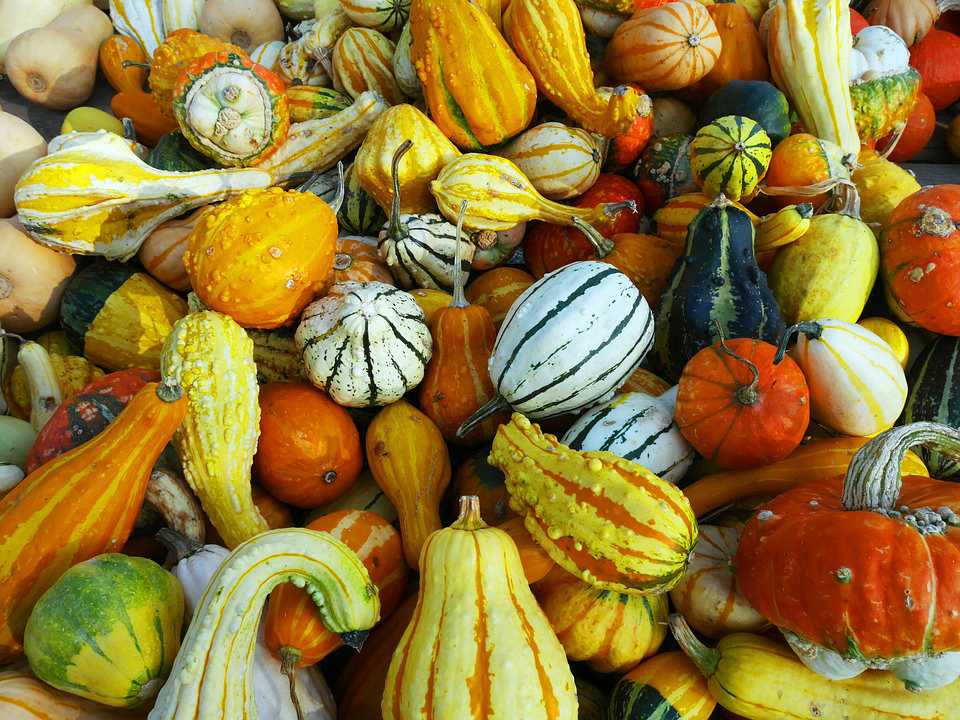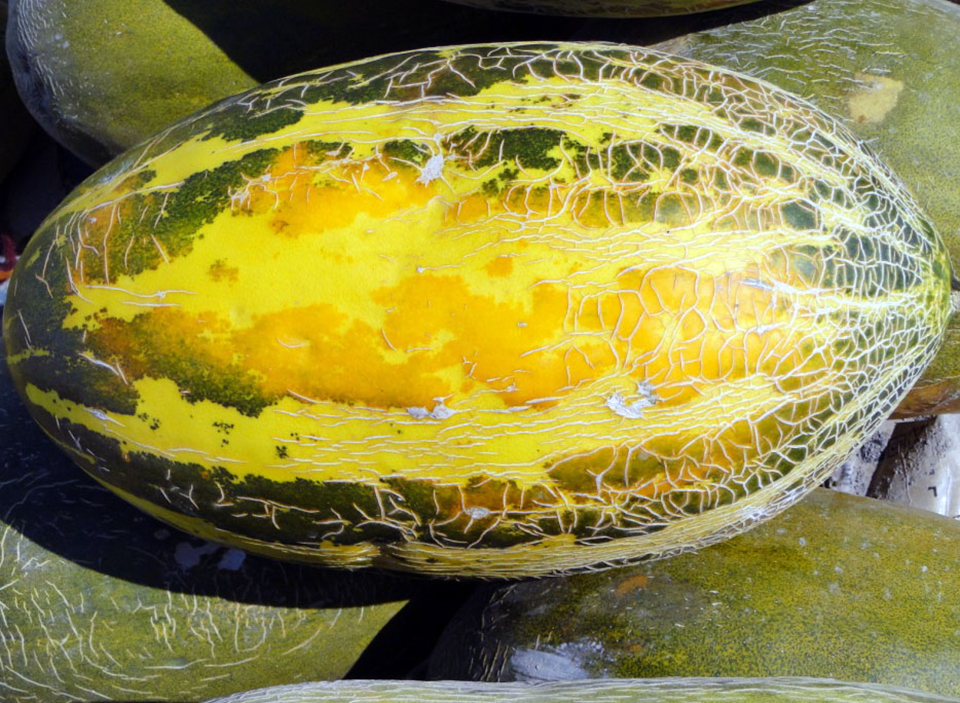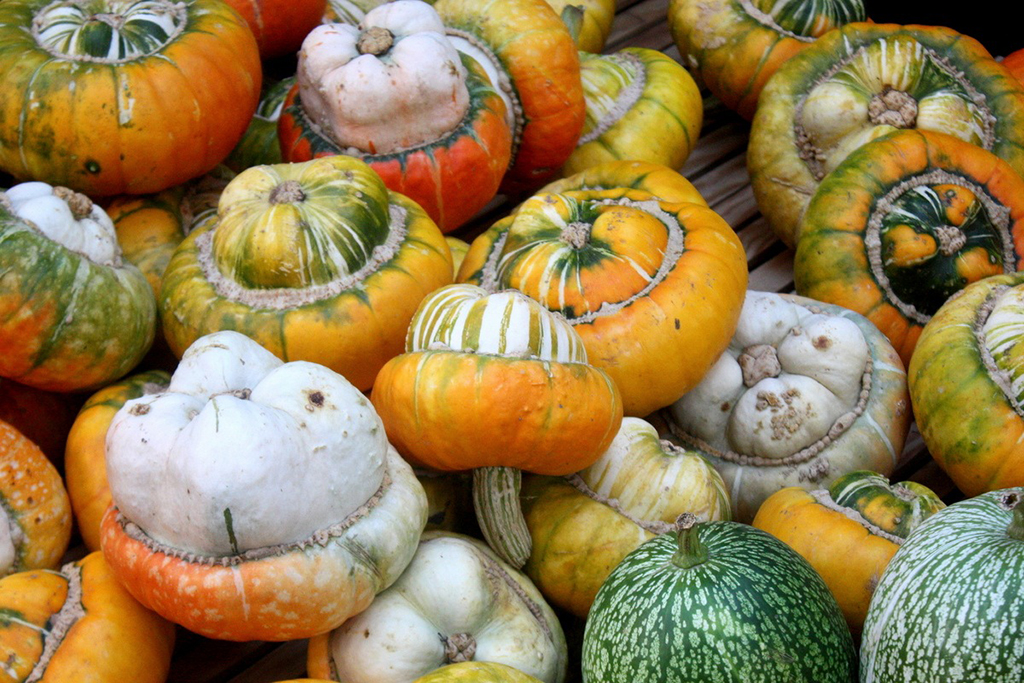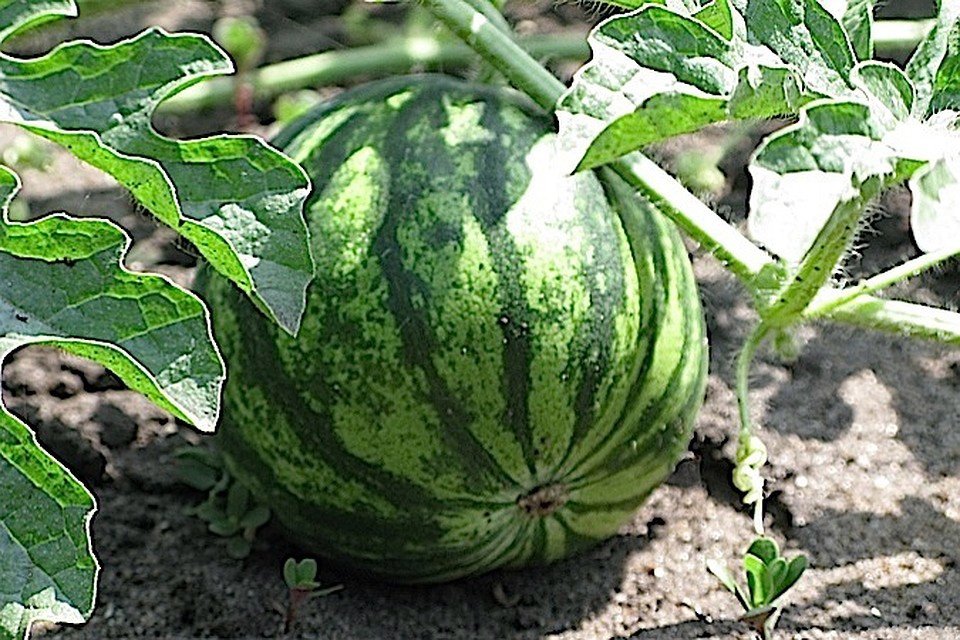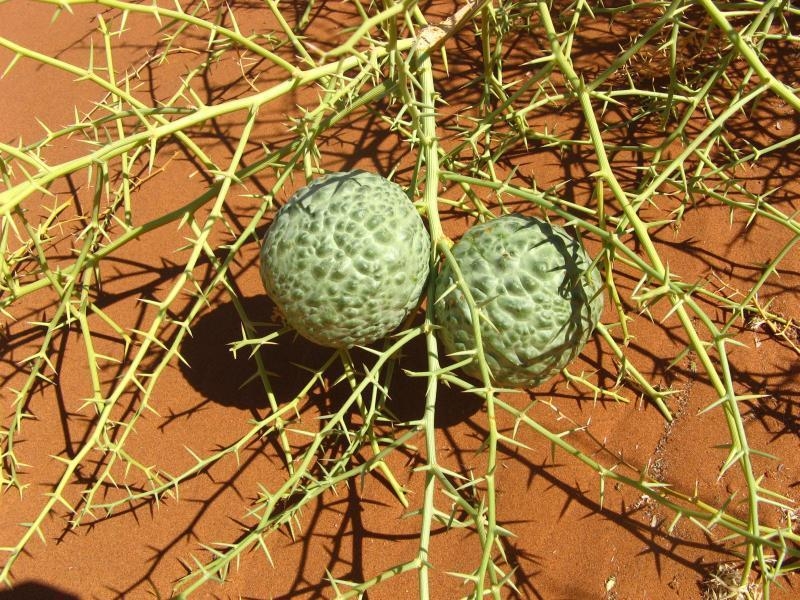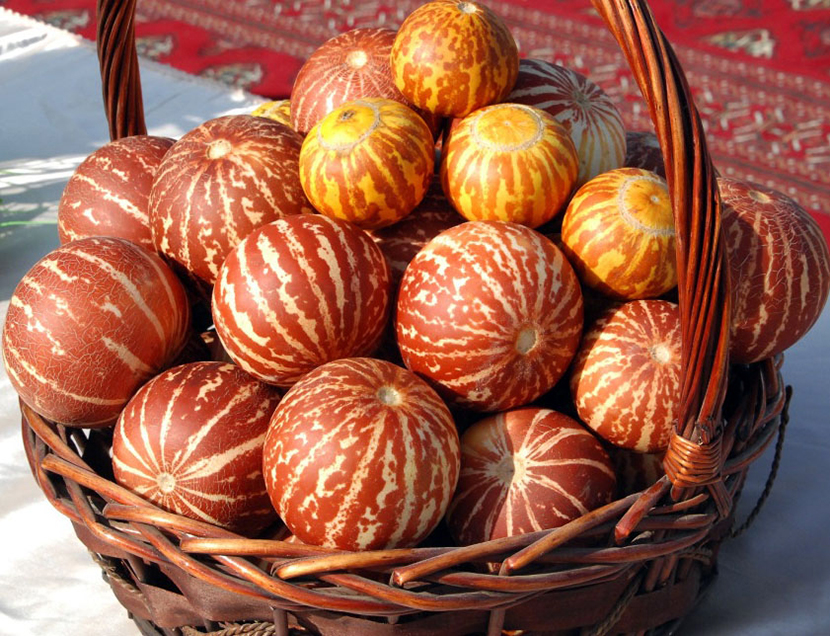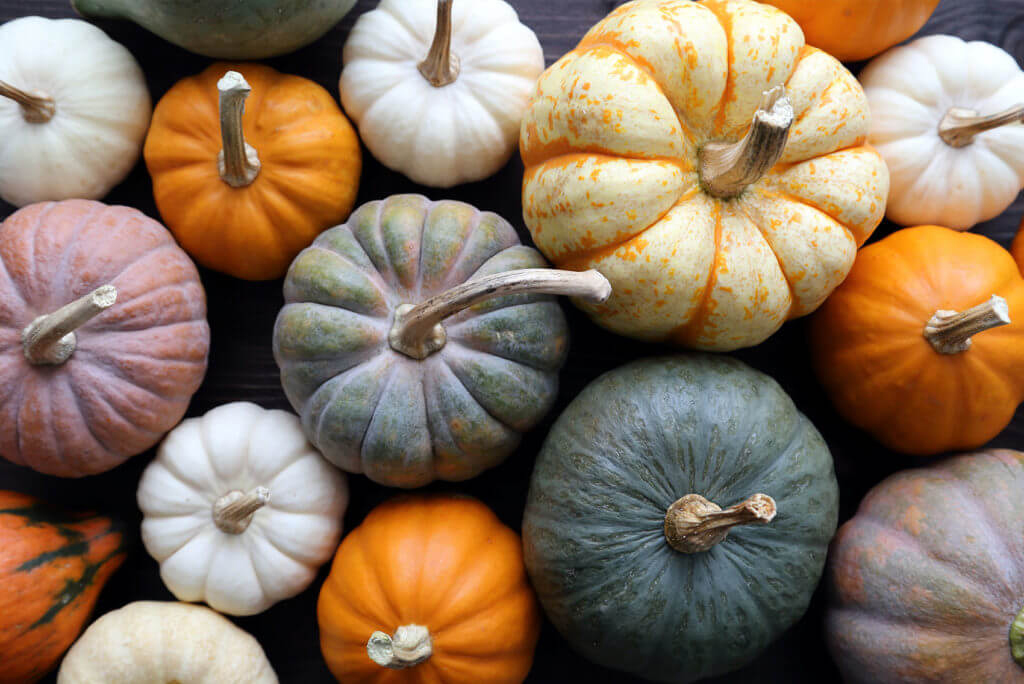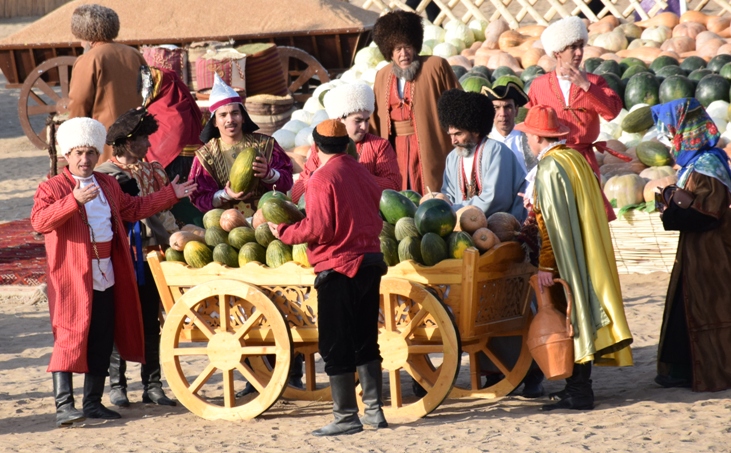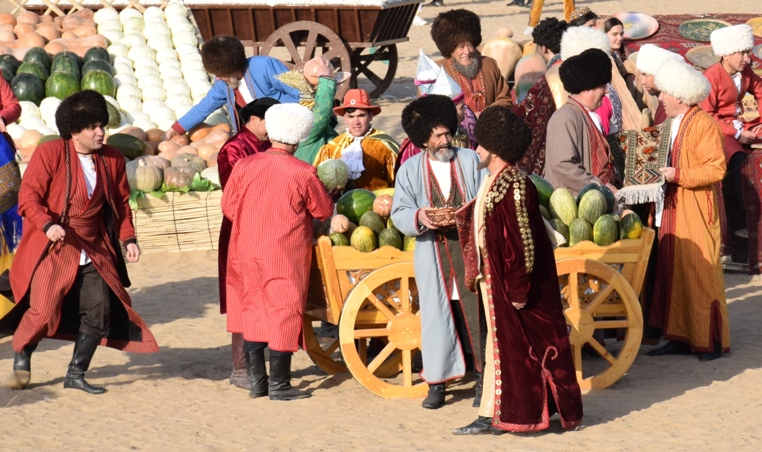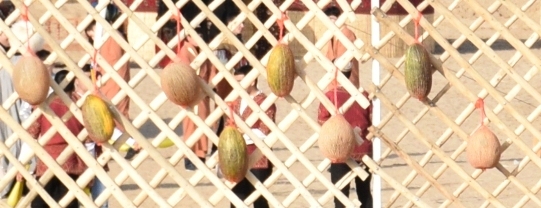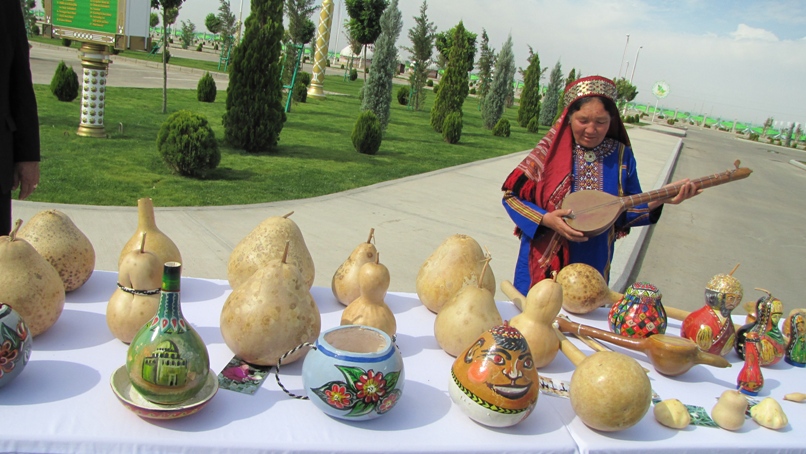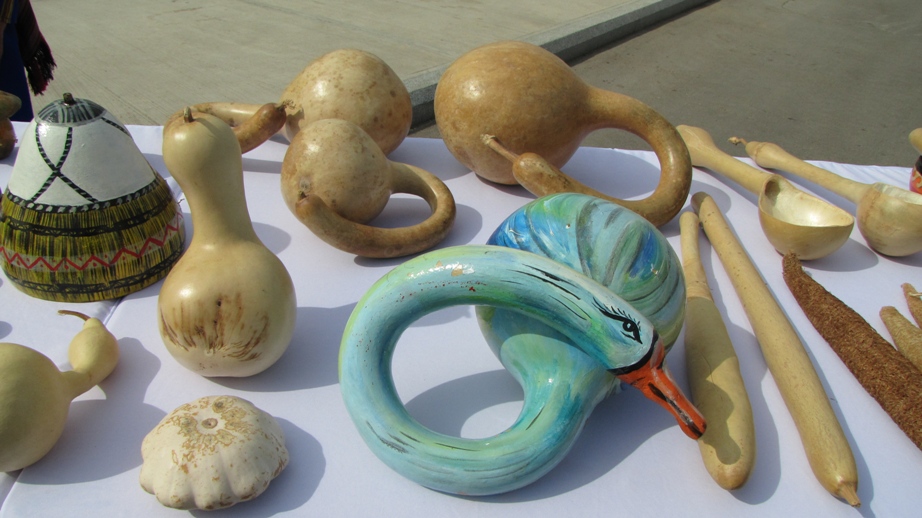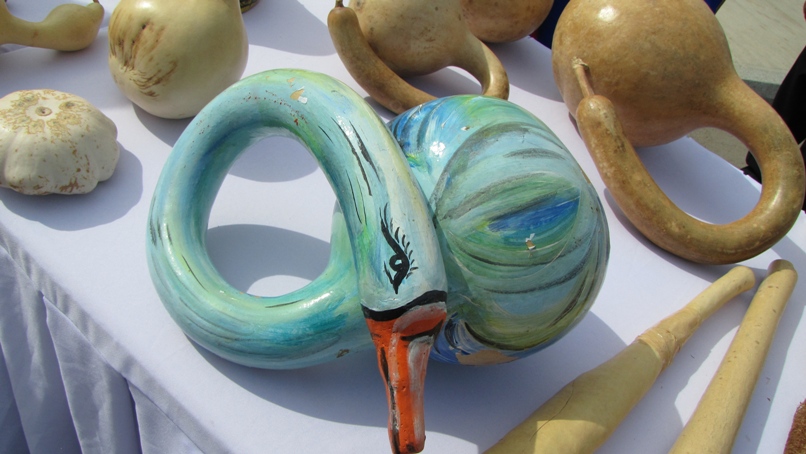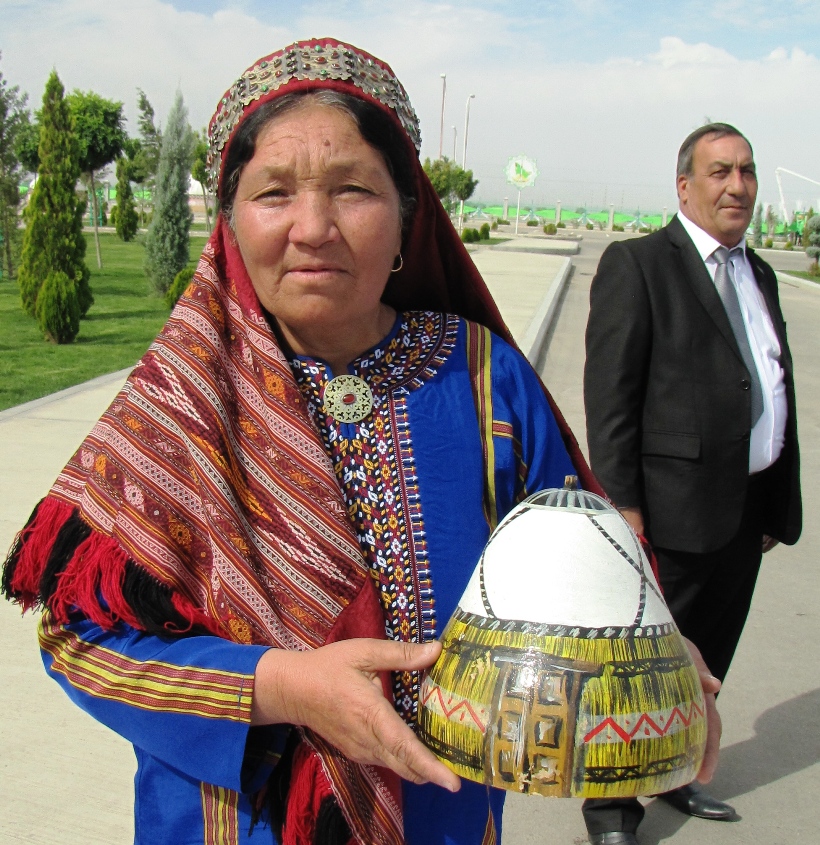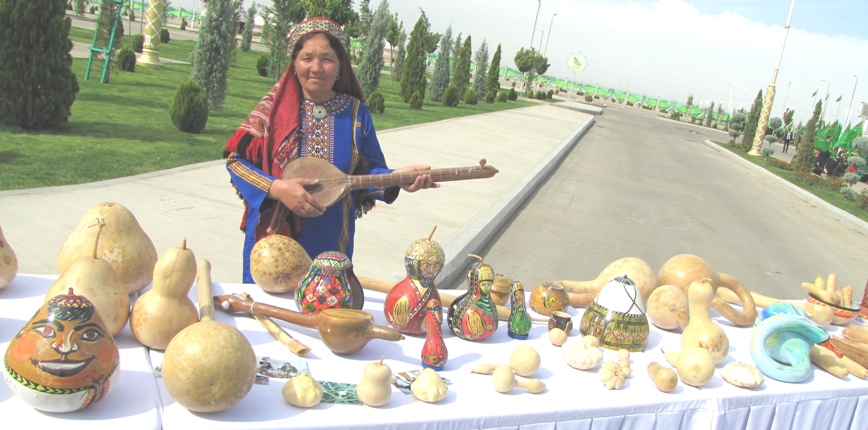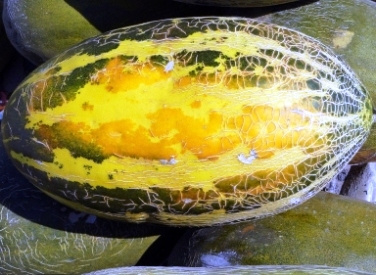
This is the time of the year when the markets in Turkmenistan are bulging with all kinds of melons, watermelons, and gourds. Of the more than 1600 varieties of this group, Turkmenistan is home to some 400 of them.
Turkmenistan celebrates Melon Day on the second Sunday of August.
The versatility of the melons of Turkmenistan and their ability to thrive on very little water under the harsh sun is remarkable. If the farmer can provide just a glass of water a day, he can expect from a single plant two to eight melons, which can weigh up to 10 kg.
Nothing from a melon or watermelon goes waste — its flesh, raw or ripe – can be eaten directly or cooked as a vegetable, alone or in combination with other vegetables and meat.
The skin of the melons can be fed to the livestock or turned into compost.
The melon seeds are, of course, a popular snack.
The dried shells of pumpkins are turned into captivating works of art.
The fast growing varieties that take 40-45 days to ripen include “kyrgünlük”, “garypgaldyran”, “zamça”, and “çal-mesek.”
The other varieties such as “garrygyz”, “gyzylhum”, “garaganat”, “sarygaş”, and “sarypöwhe” mature in 120-130 days.
The market, therefore, remains supplied with the melons, watermelons, and pumpkins throughout the summer season.
Each variety differs from the others in shape, aroma and the beauty of its shell.
As a matter of fact, the exterior of a melon is truly a work of art of the nature, as if each melon was hand painted. /// nCa, 23 August 2019 [pictures credit nCa, TDH, Altyn Asyr, and Orient]
